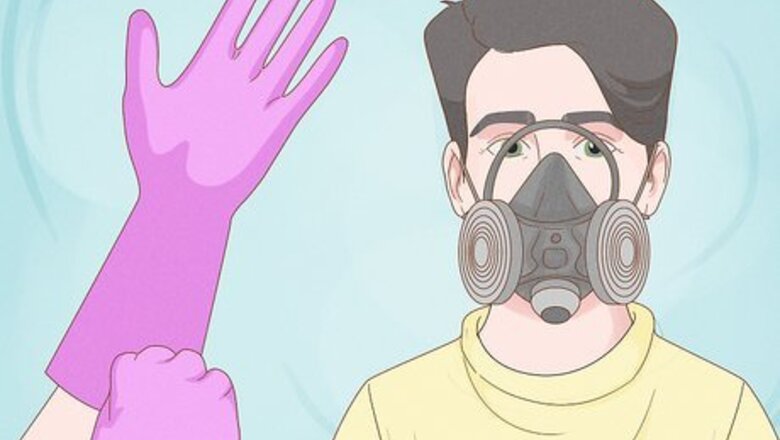
views
Using Diatomaceous Earth Safely
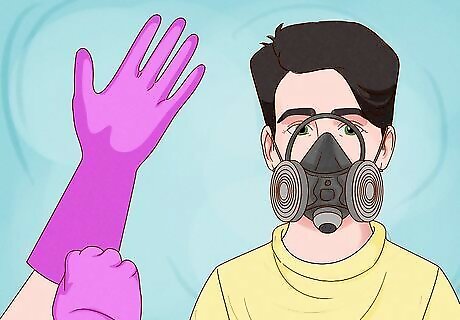
Avoid breathing in or touching the dust particles. Diatomaceous earth is a fine powder, which can irritate your throat if you breathe a lot of it in. Wear a face mask to avoid inhaling the powder, and wear gloves on your hands so that the powder won’t dry out your skin. If you don’t have a face mask, you can also wear a bandana or towel over your mouth to keep out the dust.
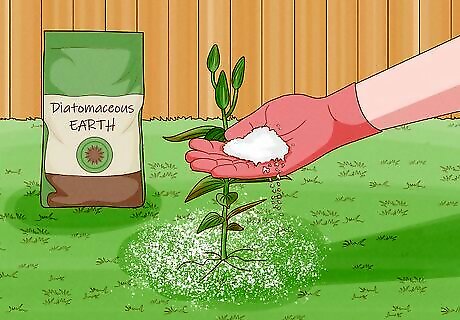
Use diatomaceous earth on plants that truly need it. Instead of spreading the powder all over your yard, only use it on plants that are being eaten or really need the protection. This will help protect beneficial insects that you might have in your yard, such as bees. Apply it close to the ground, and avoid spreading it over flowers that are in bloom so that you don’t harm bees.
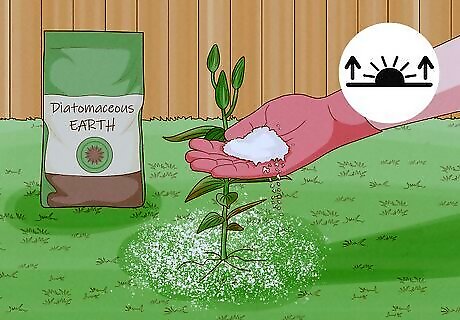
Apply the powder in the early morning or evening for best results. There’s often morning dew on your plants during this time, which will make the powder adhere much easier. It’s also a great time to spread the powder because bees and other beneficial insects aren’t as likely to be out and about at that time.
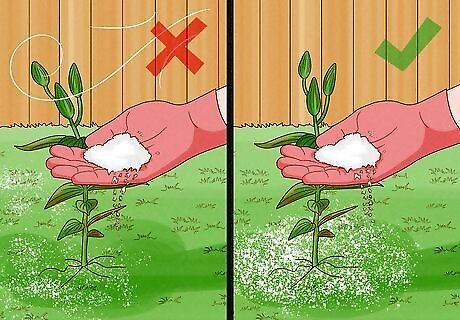
Spread diatomaceous earth on non-windy days. Since it’s a fine powder, diatomaceous earth blows away very easily. To prevent your application from blowing around your yard, or out of your yard completely, wait until it’s a calm day outside to spread it. If you have to spread it in light wind, opt for using a wet application to help keep the diatomaceous earth in place.
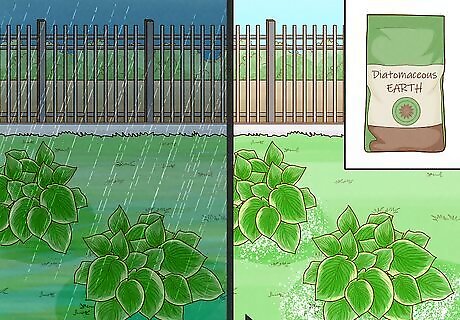
Reapply diatomaceous earth after heavy wind or rain. A rainstorm or super windy day is likely to wash or blow away the diatomaceous earth, especially if it was spread in powder form. If it rains or is windy, wait until the weather dies down a bit and reapply just as you did the first time. It's okay to apply diatomaceous earth when the ground is wet after a rain shower, just make sure it's not going to rain heavily afterwards.
Spreading Wet Diatomaceous Earth Outside
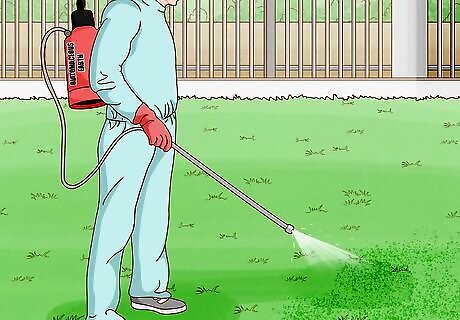
Use wet diatomaceous earth to ensure it sticks to the plants. If you're worried about the powder getting picked up by the wind, spreading a wet application over the intended area will help it attach to the plants and ground. Wet applications of the powder are also the best option when you're treating a larger area. For example, if you need to use diatomaceous earth on your entire lawn, using a large spray bottle will allow you to easily spread it.
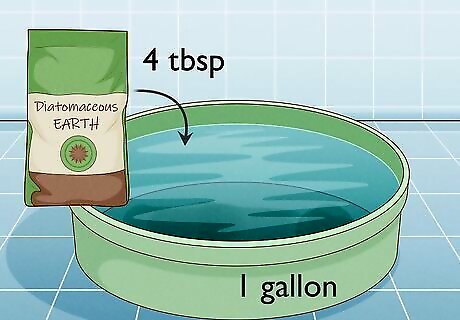
Mix 4 tablespoons (59 ml) of diatomaceous earth with 1 gallon (3.8 L) of water. Use a water jug, bucket, or similar container to hold the contents. Pour in 4 tablespoons (59 ml) of diatomaceous earth for every gallon (3.8 L) of water. Mix these together thoroughly until the powder dissolves. It’s easiest to pour the 4 tablespoons (59 ml) into a jug of water, seal the lid on tightly, and then shake the container to get the powder to dissolve.
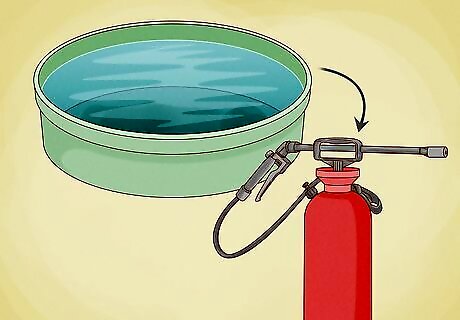
Fill a spray bottle or garden pump sprayer with the mixture. If you only need to apply diatomaceous earth to a specific spot, a small spray bottle is the perfect application option. For spraying bigger areas, trying using a garden pump sprayer filled with the mixture. If you're treating 1 or 2 plants, you might use a small spray bottle. If you're treating a larger area, such as your entire flower bed or garden, you'd want to use a garden pump sprayer.
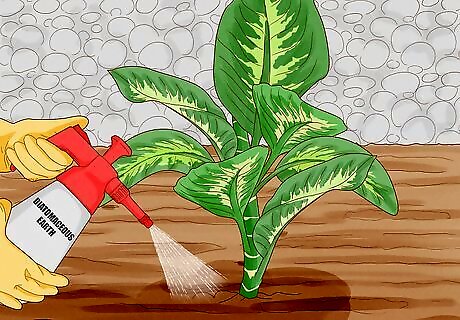
Spray the plants or lawn section with a fine layer of diatomaceous earth. Use your spray bottle or pump to apply a thin layer of diatomaceous earth to all sides of the plants. The plants and other necessary areas should be wet, but not dripping. If you’re applying it to leaves, remember to spray the bottom of the leaves as well.
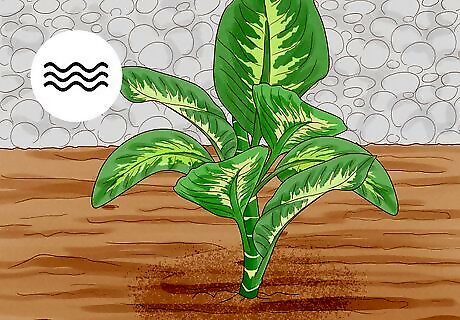
Allow the spray to dry completely before it starts working. Diatomaceous earth doesn’t work while it’s still wet—it will need to completely dry first. Once the water evaporates, the powder will be left on the plants, providing a protective barricade against any pests.
Using Dry Diatomaceous Earth
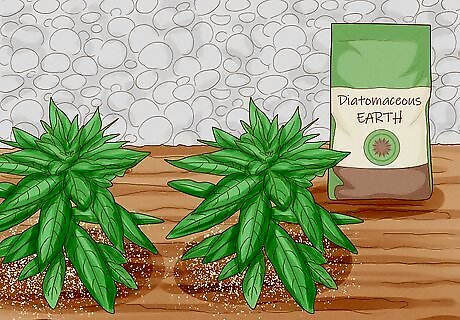
Apply dry diatomaceous earth quickly for smaller areas. Spreading the powder in dry form is much quicker for smaller areas, as you don't have to mix it with water. You'll apply a thin layer of the powder to the spots needed, making sure you don't layer it on too thick and it doesn't clump. The plants should be able to receive sunlight and grow properly.
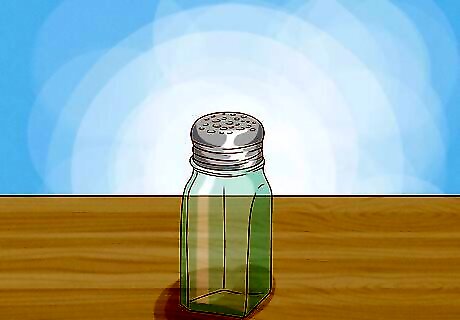
Use a shaker to apply the dry powder. You can either buy one specifically for this purpose, or you can create your own using an old spice shaker or plastic coffee can. Punch 5-10 holes in the container using a nail to allow the powder to fall through. You can also use a garden duster or flour sifter. Sometimes you can even buy bags of diatomaceous earth that come with a duster built in. Find products specifically for spreading diatomaceous earth powder at your local garden store or online.
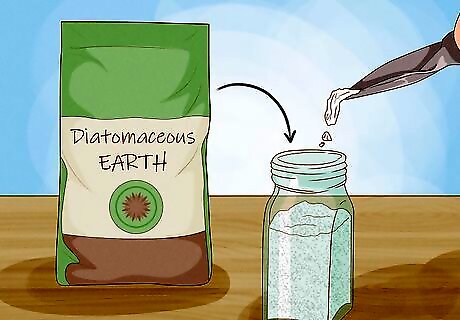
Fill the shaker with the diatomaceous earth powder. Use a small shovel to transport the powder into the shaker instead of pouring the powder directly from the bag into the container—this will help prevent dust from flying up. Fill the shaker up with as much powder as you think you might need to cover the intended area.
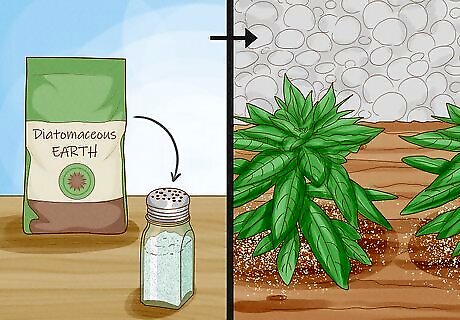
Sprinkle the powder over the plants using the shaker. Spread diatomaceous earth over the plants and other sections of your lawn that truly need it—remember to avoid haphazardly spreading it everywhere. Shake it onto both sides of the leaves if the leaves are damaged, leaving behind a thin layer. Applying the powder around the base of your garden or right at the soil level will help prevent crawling insects from eating away at your plants.

















Comments
0 comment